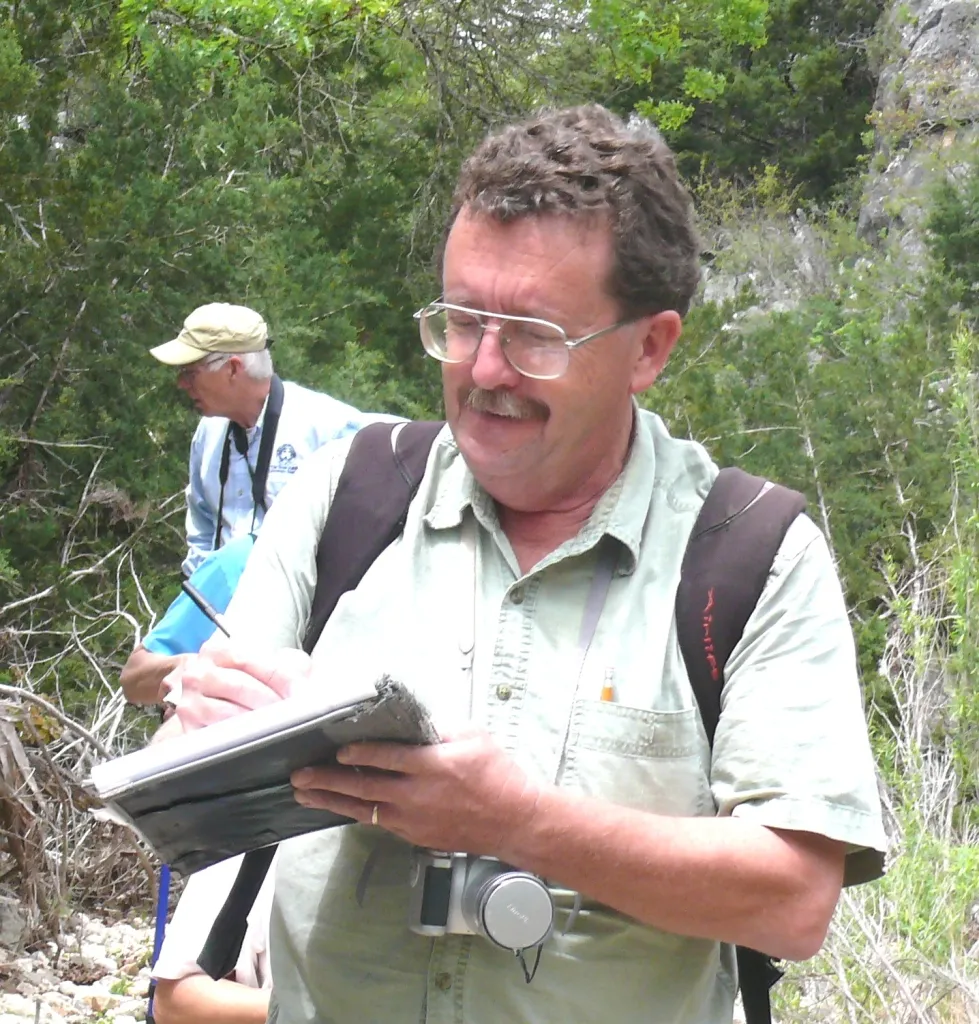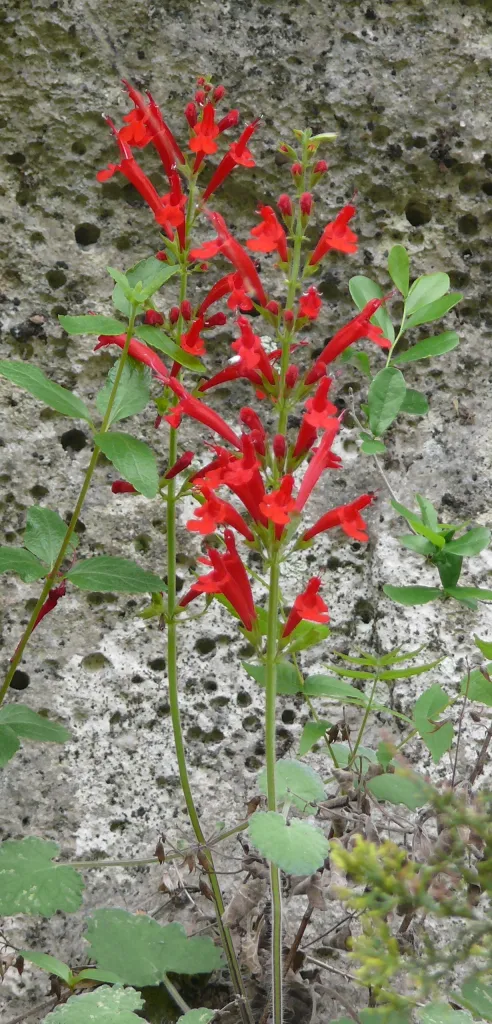Author: Bill Ward
The nicest native-plant gardens I’ve seen around this area are not manmade; they are natural. They have a wide variety of trees and bushes, seasonally blooming forbs, ferns, decorative rocks, and water features – everything one could want in a native-plant garden.

These are the little Gardens of Eden hidden away in the moist limestone canyons that are scattered around the Hill Country. In these canyon gardens are plants you don’t see in other places. The microclimate in canyons make them refuges for the remnants of both Eastern and Western plants that supposedly were widespread over this area during the last Ice Age.
Probably just as important as the extra moisture are the steep canyon walls. Over-abundant deer, goats, and sheep have eradicated many native plants from much of the Hill Country, but certain favorites of the browsing animals still are surviving on the steep canyon walls.

Today I was lucky enough to be part of a group that hiked through a little canyon in the Medina River drainage basin northwest of Pipe Creek. This was one of the spring native-plant field trips sponsored by the Cibolo Nature Center and led by Bill Carr of the Texas Nature Conservancy.
We were doubly lucky! Not only were we getting to walk through one of those beautiful lush canyon gardens, we were led through it by Bill Carr, an eminent expert on Hill Country flora. Bill is a botanist’s botanist. Many times I’ve heard other experts on Central Texas plants say, “I’m not certain. Let’s see what Bill Carr thinks this is.”
Bill Carr is coauthor with Jackie Poole, Dana Price, and Jason Singhurst of the new book “Rare Plants of Texas.” Today we saw one of the plants featured in this book – canyon mockorange, which is unusually abundant in parts of the canyon we visited.
For us amateur native-plantphiles, a patient knowledgeable teacher such as Bill Carr makes a big difference in how much we see in the canyon gardens. And many of the plants we saw today, with Bill’s help, are found only in the Hill Country, nowhere else in the world.

This canyon we walked today is not so large, only about 30 to 40 feet deep, 50 to 100 feet wide, and less than half a mile long. However, the number of kinds of plants is amazing. What makes this rugged little canyon particularly interesting is that it trends more or less east-west. This gives it a sunny south-facing wall and a shady north-facing wall, each with different vegetation.
The shady slope was in bloom today. Red-flowered cedar sage and scarlet penstemon and rose-pink false pennyroyal decorated the limestone walls in several spots. Eye-catching white blossoms in the understory were rusty blackhaw and redroot. Higher in the canopy, slender stalks of tiny white flowers hung from the escarpment black cherry. In a few weeks, the north-facing slope will be even prettier when all the canyon mockorange is covered with white blossoms. This shady side also is home to at least six kinds of fern.

The south-facing wall has noticeably fewer trees and bushes than the shady wall. Though little is blooming now, the abundant cut-leaf penstemon and rock daisy ensure that the sunny slopes will be much more colorful during the summer and fall.
The Cibolo Nature Center is offering two more trips to see native plants in two other limestone canyons, April 21 and May 5. Bill Carr will lead both!
